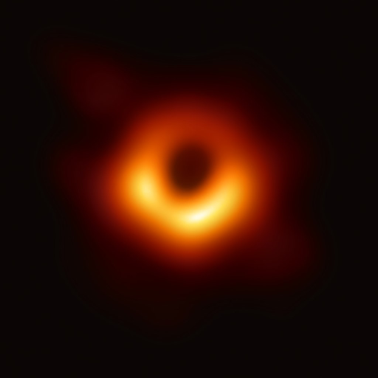The Breakthrough Foundation announced that the 2020 Breakthrough Prize in Fundamental Physics will be awarded to the Event Horizon Telescope Collaboration (EHTC), for “the first image of a supermassive black hole, taken by means of an Earth-sized alliance of telescopes” [1]. The image was achieved with world-wide efforts from the EHTC and collaborators.
The EHTC Director Shep Doeleman from the Harvard-Smithsonian Center for Astrophysics will accept the prize on behalf of the EHTC at the 8th annual gala awardsceremony on November 3. The prize will award the EHTC with 3 million US dollars, to be equally shared by 347 scientists around the world, including 2 scientists from the Kavli Institute for Astronomy and Astrophysics at Peking University — the Director and University Chair Professor Luis C. Ho and Assistant Professor Lijing Shao. These 347 scientists are the coauthors of six papers “First M87 Event Horizon Telescope Results”, which were published in the Astrophysical Journal Letters on April 10, 2019 [2].
In Einstein’s theory of general relativity, black holes are fantastic, yet among the simplest, objects in the Universe. A black hole is a region of deformed spacetime exhibiting gravitational acceleration so strong that nothing can escape from it. The boundary of the region from which no escape is possible is called the event horizon. The dynamics of matter and light close to the event horizon are of tremendous interest to fundamental questions in astronomy and physics. However, due to the small size of event horizons and the large distance of black holes, the angular opening of the event horizon is extremely small, which calls for the finest possible resolution of telescopes.

Figure 1. The first image of the supermassive black hole in M87 by the Event Horizon Telescope Collaboration [2].
The work in the above-mentioned six papers answers an intriguing question “What does a black hole look like?” The image of the black hole in M87 was created by 8 telescopes around the world, strategically forming a virtual telescope as large as the Earth itself. This “giant telescope” has an unprecedented resolving power to pick up details as fine as the size of the event horizon of the supermassive black hole in M87. The image --- a characteristic ring fully consistent with the prediction from Einstein’s theory --- was revealed to the world (Figure 1). This achievement led to the 2020 Breakthrough Prize in Physics.
The Breakthrough Prizes, awarded since 2013, are sponsored by Sergey Brin, Priscilla Chan and Mark Zuckerberg, Ma Huateng, Yuri and Julia Milner, and Anne Wojcicki. It is known as the “Oscars of Science”, annually recognizing achievements that ask the biggest questions and seek the deepest explanations. The ceremony this year has the theme “Seeing the Invisible”, which is inspired by EHTC’s work to reveal a hidden, uncharted world. Continuous efforts are still ongoing inside EHTC, aiming to achieve an even better resolution for the event horizon of supermassive black holes.
[1] https://breakthroughprize.org/News/54
[2] https://iopscience.iop.org/journal/2041-8205/page/Focus_on_EHT
PKU News: http://news.pku.edu.cn/xwzh/dd0a29c5a4644a5da021c9fdafc1dbcd.htm
PKU Research: http://www.research.pku.edu.cn/bdkyjz/1313033.htm